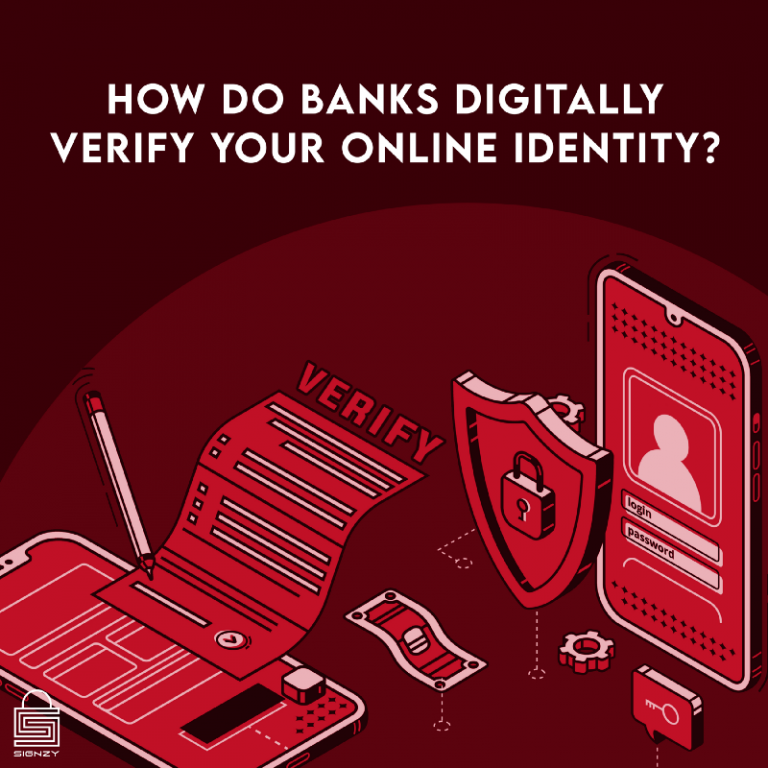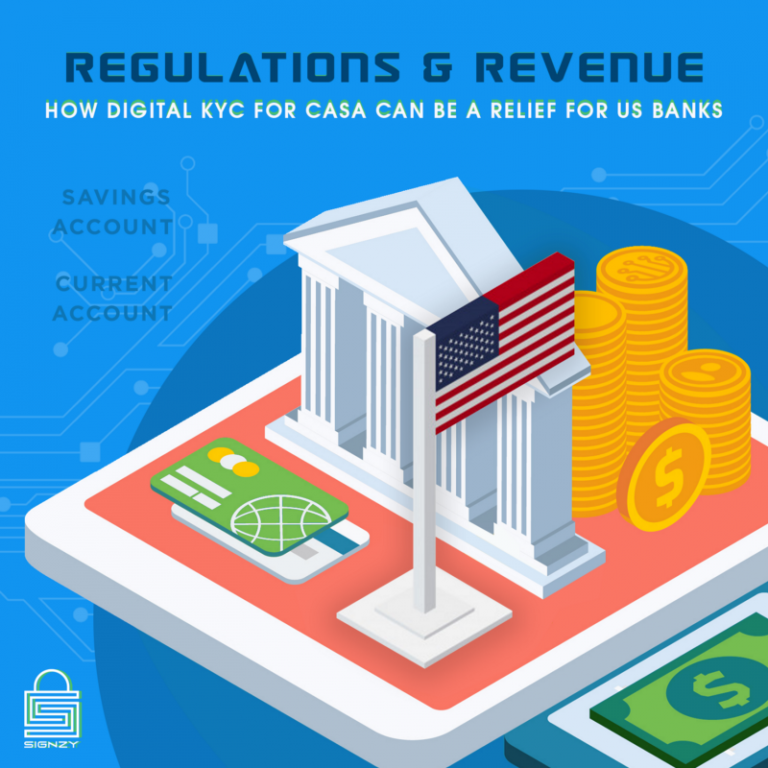Data breaches and identity fraud continue to be a primary security concern for banks and fintechs . They have harmful financial ramifications for banks. They can also damage the reputation of institutions around the world. As technology advances so do the fraudsters’ methods of theft and deception. Banks need to provide online identity verification service to their users to fulfill regulatory obligations and manage risk.
First, banks have to ascertain that you are who you claim to be. Second, they have to determine that you aren’t a terrorist or involved in crimes like money laundering.
This first step in the traditional KYC process in banks is manually verifying the identity of a customer. This could prove to be the weakest link in a bank’s KYC process. Why? Because it is the most vulnerable to human error.
Fulfilling compliance obligations like Anti-Money Laundering (AML) checks & Combating the Financing of Terrorism (CFT) is not easy for all the entities. Common hurdles are:
- A lack of resources
- Negative effect on customer experience
- Maintaining strict standards of data security
Online identity verification is a suitable solution for all these problems. It fulfills regulatory requirements and provides a secure and seamless user experience. The method is efficient and can easily practice robust data security.
Transitioning to Online Identity Verification
Total identity fraud losses reached $16.9 billion (USD) in 2019 according to Javelin’s 2020 Identity Fraud Survey. It is an annual comprehensive analysis of identity fraud trends. To prevent the instances of such crimes, financial regulatory authorities are setup. Examples include the Financial Action Task Force (FATF). Also, local regulators have set up KYC and AML compliances that businesses are encouraged to adhere to. These regulations enable businesses to carry out proper due diligence for their customers. This can be easily done by properly analyzing customers’ documents to verify their identity. This also helps reduce the probability of fraud and scam. This KYC procedure was mostly done with in-person verification (IPV) by banks, financial institutions, and government offices. However, this was a time-consuming ordeal. Currently, the process is seamlessly done with the help of AI driven online identity verification systems.
Now you can conduct your business via your computer and cell phone. In the meantime, the bank or business representative can authenticate your identity. It can detect stolen personal identifiable information and forged synthetic ID documents. This can be done with technology like image forensics.
Capture, Extract, Verify, Screen, Result
How does it work?
- Identity documents are uploaded in real-time. The software detects the document and extracts relevant information from it using AI-based OCR extraction.
- The data is then analyzed to detect fraud. Next, the name is screened. This determines if the individual poses higher risk from a Money Laundering or Reputation Risk Perspective.
- Once the checks are done, a result is procured within minutes.
Document Verification
Detailed customer attributes can be verified through government issued identity cards and documents. They can be a permutation or combination of the following:
- Personal Credentials (Name, Number, Age, Date of Birth, and more)
- Nationality & Immigration Status (Residence Country, Place of Birth, Sponsor, Citizenship and more)
- Documentation for Demographic Information (Tax Numbers, ID Number, Birth Certificate Number, Domiciles and more)
- Employee Data & Employer Registration (Employer ID, Year Of Registration, Permit Type, Invoice Details and more)
The types in which these can be falsified are:
Illegitimate documents: These documents are completely fake. They consist of characteristics like missing holograms or other set standards. These form the essential parts of a legitimate version of that document.
False documents: This document is originally owned by another person. The fraudster tries to utilize it to authenticate himself.
Modified documents: This signifies an ingenious document which has been altered. This is where the fraudsters change the font and writing style to manipulate the system.
The online identity verification software can distinguish between all sorts of duplicate documents. Ex: fake, illegitimate, and counterfeit documents. The digital document verification is about 98.39% accurate. Much more precise than traditional manual document verification. It also saves time and resources, allowing customers to verify themselves in the comfort of their homes and offices within a few seconds.
Databases & negative lists
The next step after document verification is a background check for AML compliance. A name is screened against multiple sources and databases to reveal anything suspicious or risky. The sources can be:
-
Government Databases
A person is accurately identified by tallying information on their ID and publicly available government databases. A PAN card database is maintained by the central government. Aadhaar data is centrally based, with the central database resting with UIDAI. For entities, databases exist like the Registrar of Companies maintained by the Ministry Of Corporate Affairs. There are databases according to profession for Chartered Accountants, lawyers, government officials etc.
-
Negative Lists
Negative database APIs are used to see if the name appears on any black lists.
-
AML/ CFT
As per Reserve Bank of India guidelines, banks are required to ensure that before opening any new accounts, proposed customers do not appear in the United Nations’ List under Security Council Resolutions (1267) and the terrorist lists circulated by RBI. Other lists include Interpol Most Wanted, Central Bureau of Investigation, Lists issued under other Resolutions by the United Nations. The FATF blacklist or OECD blacklist is furnished by the by the FATF of the Organization for Economic Co-operation and Development (OECD) from 2000, and highlights the countries which OECD judges to be non-cooperative in the global initiative against money laundering and terrorist financing, dubbing them as “Non-Cooperative Countries or Territories” (NCCTs).
-
Sanction lists
Financial sanctions form a crucial aspect of the global fight against financial crime and are harnessed by governments across the globe to restrict or prohibit trade with foreign targets which are involved, or suspected of being involved, in illegal activities. Governments and financial authorities globally maintain a diverse range of targeted sanctions lists. An example of a sanctions list includes the United States’ Specially Designated Nationals and Blocked Persons (SDN) List.
Some other examples include:
UN Security Council Sanctions
The Security Council maintained by the United nations can authorize action to maintain or restore international peace and security under Chapter VII of the United Nations Charter. Sanctions measures, under Article 41, constitute a wide range of enforcement protocols that do not involve the use of armed force. Internationally, these sanctions also constitute AML/CFT regulations.
Her Majesty’s Treasury Sanctions List
The HM Treasury Sanctions List possesses the demographics (and other identifying information) of individuals/entities who are subject to UK regulations. Those sanctions comprise freezing of assets and market access restrictions — these are in tandem with UK AML/CFT policy. They are designed to curb criminal behavior from regimes around the world.
Bureau of Security & Industry
The Bureau of Industry and Security (BIS) is a security agency under the jurisdiction of the United States Department of Commerce. This organization specializes in issues involving national security and high-level technology. The primary objective for the bureau is helping stop the proliferation of weapons of mass destruction, as well as enhancing the growth of US exports.
Interpol Most Wanted List
The International Criminal Police Organization, commonly known as INTERPOL, is an international organization that facilitates worldwide police cooperation and crime control. Headquartered in Lyon, France, it has seven regional bureaus worldwide and a National Central Bureau in all 194 member states, making it the world’s largest police organization.INTERPOL maintains a most wanted database and this can contain millions of records with information on individuals such as names and fingerprints; stolen property such as passports and vehicles; and weapons and threats such as firearms.
Central Bureau Of Investigation
The Central Bureau of Investigation (CBI) is one of the primary investigating agencies of India. The organization falls under the jurisdiction of the Ministry of Personnel, Public Grievances and Pensions. The agency is renowned for investigating several economic offenses, special crimes, charges of corruption and other high-profile cases. Similar to Interpol, the CBI database also contains criminal information pertaining to AML/CFT data.
Signzy adheres to the above mentioned global sanction lists along with hundreds of other databases, making our products and solutions globally compliant.
-
PEP (politically exposed persons) lists
In financial regulation, a politically exposed person (PEP) denotes an individual who has been entrusted with a distinct public function. A PEP ideally is a higher risk for possible involvement in bribery and corruption by virtue of their position and the influence that they may possess.
-
Panama Papers
11.5m files from the database of the world’s fourth-biggest offshore law firm, Mossack Fonseca, were leaked in 2016. The International Consortium of Investigative Journalists (ICIJ) revealed with the documents how the rich and famous exploited secretive offshore tax regimes. With AI-based screening profiles from the data can be cleansed, and curated, revealing entities with negative information. A risk profile can then be created from the information.
Why is such a list important?
If a client possesses an offshore company, it’s quite possible that they are doing so to avoid taxes — or, even worse, so they can hide the flow of potentially illegal money. This could result in non-compliance and reputational risk. Financial institutions can decide if they want to accept the customer. If accepted, the client would be placed in the high-risk segment, with advanced due diligence.
Adverse Media & Negative news
This can include going through TBs of data from online sites, printed media sources to expose any negative news on the entity or individual.
Benefits of an Online Identity Verification system
- Automated document forensics with accurate results
- Real-time analysis with results within seconds
- ID verification for one or more types of the connected device (mobile, tablet, kiosk, PC)
- Facial recognition to match the photo on the ID with the person presenting the card
- Faster enrollment using automatic form fill/pre-fill using ID data
- Integration with back-office for audit optimization
AML at Signzy:
WorldWatch Risk Screening APIs: This API covers background checks and risk screening through AML/CFT, Politically Exposed People. It also conducts Negative Media checks for individuals as well as entities globally. This data is refreshed every 24 hours. This is because the search results are the most up-to-date information. The data is available from over 8000+ watch lists and sanctions sources globally. The APIs also include monitoring facilities to receive regular alerts.
About Signzy
Signzy is a market-leading platform redefining the speed, accuracy, and experience of how financial institutions are onboarding customers and businesses – using the digital medium. The company’s award-winning no-code GO platform delivers seamless, end-to-end, and multi-channel onboarding journeys while offering customizable workflows. In addition, it gives these players access to an aggregated marketplace of 240+ bespoke APIs that can be easily added to any workflow with simple widgets.
Signzy is enabling ten million+ end customer and business onboarding every month at a success rate of 99% while reducing the speed to market from 6 months to 3-4 weeks. It works with over 240+ FIs globally, including the 4 largest banks in India, a Top 3 acquiring Bank in the US, and has a robust global partnership with Mastercard and Microsoft. The company’s product team is based out of Bengaluru and has a strong presence in Mumbai, New York, and Dubai.
Visit www.signzy.com for more information about us.
You can reach out to our team at reachout@signzy.com
Written By:

Signzy
Written by an insightful Signzian intent on learning and sharing knowledge.














